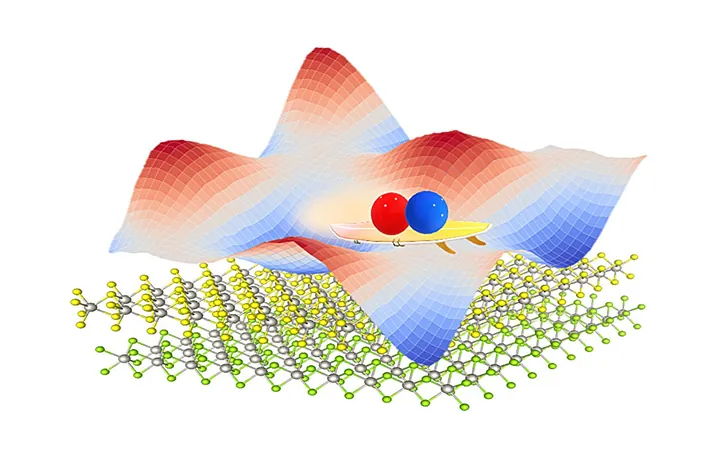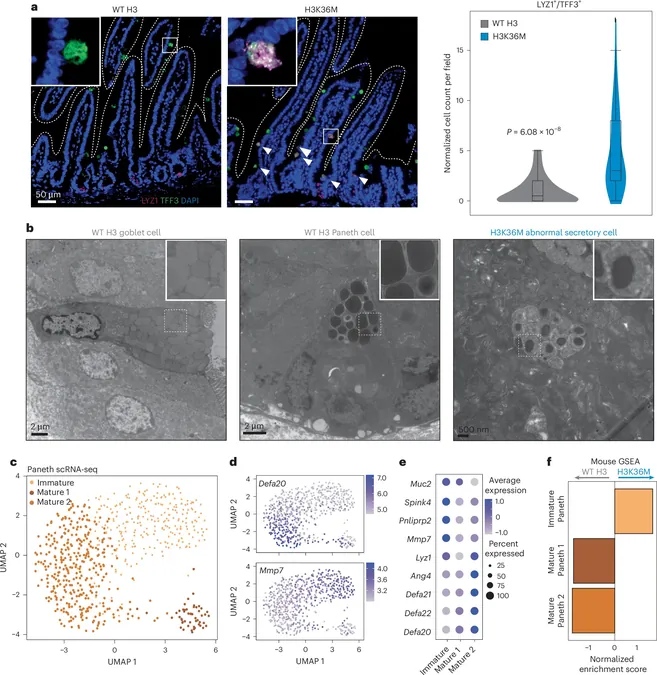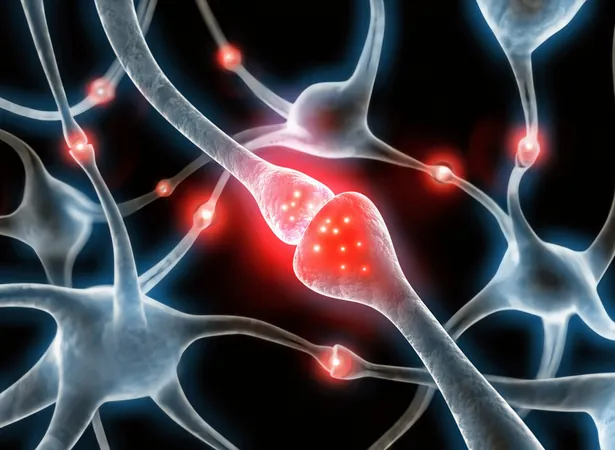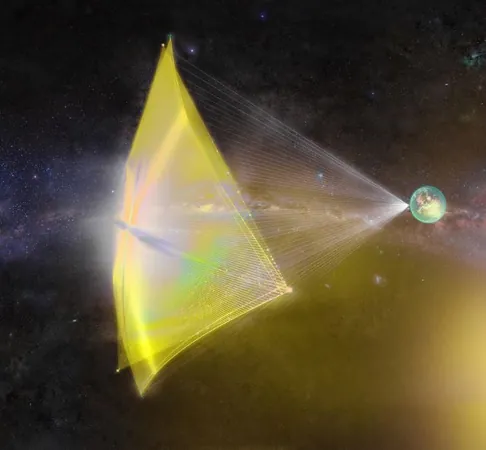
Moiré Magic: Researchers Unravel How Phasons Enable Excitons to Survive and Thrive at Low Temperatures
2025-03-24
Author: Wei Ling
Moiré Magic: Researchers Unravel How Phasons Enable Excitons to Survive and Thrive at Low Temperatures
In the world of quantum materials, a stunning visual phenomenon known as the moiré pattern emerges when two identical repeated images are overlaid and rotated. This optical marvel not only captivates the eye but also reveals a rich tapestry of physics when applied to semiconductors like transition metal dichalcogenides (TMDs).
Recent groundbreaking research from the Molecular Foundry at Lawrence Berkeley National Laboratory has exposed a serendipitous secret: the moiré potentials produced by stacking TMD layers are not as static as previously believed. Even in the frigid depths of low temperatures, these potentials are dynamic, unlocking new possibilities for quantum stability in technology.
Unlocking the Secrets of Moiré Patterns
Moiré potentials act like a canvas of energy fluctuations, comprising alternating peaks and valleys. The research team, led by Antonio Rossi and Archana Raja, has shown that these energy landscapes feature mobile properties, enabling interlayer excitons (IXs) to navigate through them rather than remaining trapped. This unexpected mobility opens avenues for advancements in the stability of quantum technologies, such as qubits and sensors, by reducing decoherence—the phenomenon whereby quantum states lose their valuable information.
The Science Behind the Excitons
Excitons are created when electrons in semiconductors are excited by lasers, generating pairs of negatively charged electrons and positively charged holes. In a typical single-layer material, these excitons form uniformly. Yet, in the intriguing world of stacked TMDs, electrons leap between layers and create interlayer excitons. The research team expected these IXs to be confined within their moiré patterns, akin to being stuck in a valley surrounded by tall mountains.
But astonishingly, the researchers discovered that the IXs were adept at traversing their moiré seascape. Rossi noted, “We observed that it takes little energy to stimulate movement within this landscape, mimicking the shifting tides of a stormy sea.”
The Role of Phasons: Quasiparticles That Surf the Moiré Waves
So, what fuels this unexpected movement? Enter the phason—a type of quasiparticle thought to exist within the moiré pattern itself, propelling the IXs forward. Rossi likened this mechanism to a surfer riding waves: “The IX is basically surfing on the moiré, facilitated by the phason. It's transporting these excitons across the dynamic potential.”
The research further indicated that the IX's motion is influenced by the alignment of the TMD layers and the temperature of the system, achieving peak mobility when the layers are perfectly aligned. Interestingly, even as temperatures approach absolute zero, the excitons continue to display some degree of motion, defying expectations and indicating that quantum behavior retains an element of 'life' even in extreme conditions.
Implications for the Future of Quantum Technologies
These findings have far-reaching implications for the field of quantum information technology. By understanding and harnessing the mobility of excitons within moiré potentials, scientists could potentially enhance the reliability of qubits, reduce decoherence problems, and propel various quantum applications forward.
Rossi's future research may delve into exploring superconductivity within twisted bilayer graphene stimulated by these phason quasiparticles. The potential for innovation in quantum technologies may be just beginning to surface, with insights stemming from the behavior of these tiny excitons in a seductive seascape of moiré patterns.
Conclusion
As researchers continue to probe the intricate behaviors that govern quantum materials, the intersection of art and science within moiré patterns may soon yield technologies that redefine our understanding of quantum computing, paving the way for a new era of information processing that could change the technological landscape forever.




 Brasil (PT)
Brasil (PT)
 Canada (EN)
Canada (EN)
 Chile (ES)
Chile (ES)
 Česko (CS)
Česko (CS)
 대한민국 (KO)
대한민국 (KO)
 España (ES)
España (ES)
 France (FR)
France (FR)
 Hong Kong (EN)
Hong Kong (EN)
 Italia (IT)
Italia (IT)
 日本 (JA)
日本 (JA)
 Magyarország (HU)
Magyarország (HU)
 Norge (NO)
Norge (NO)
 Polska (PL)
Polska (PL)
 Schweiz (DE)
Schweiz (DE)
 Singapore (EN)
Singapore (EN)
 Sverige (SV)
Sverige (SV)
 Suomi (FI)
Suomi (FI)
 Türkiye (TR)
Türkiye (TR)
 الإمارات العربية المتحدة (AR)
الإمارات العربية المتحدة (AR)